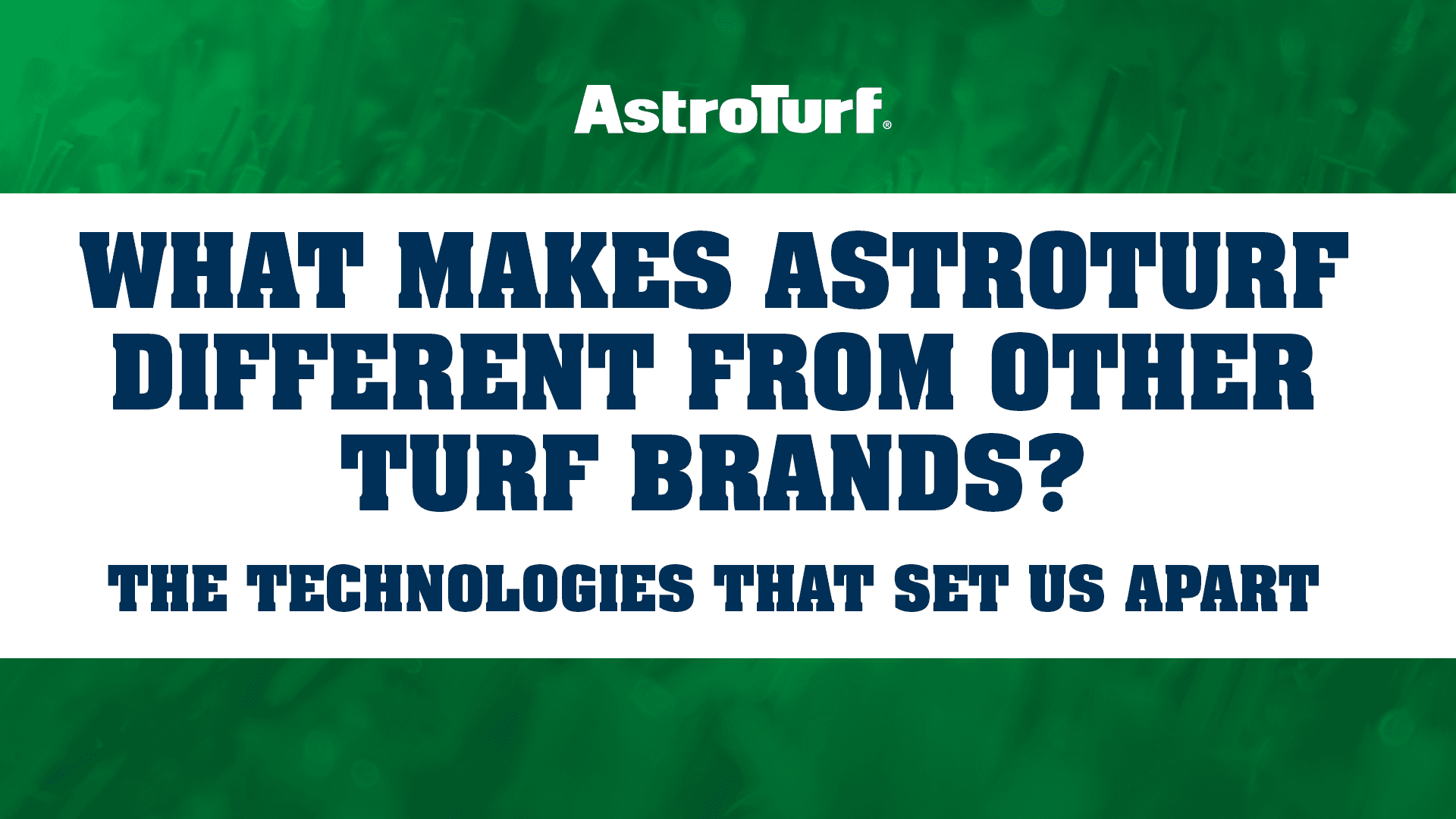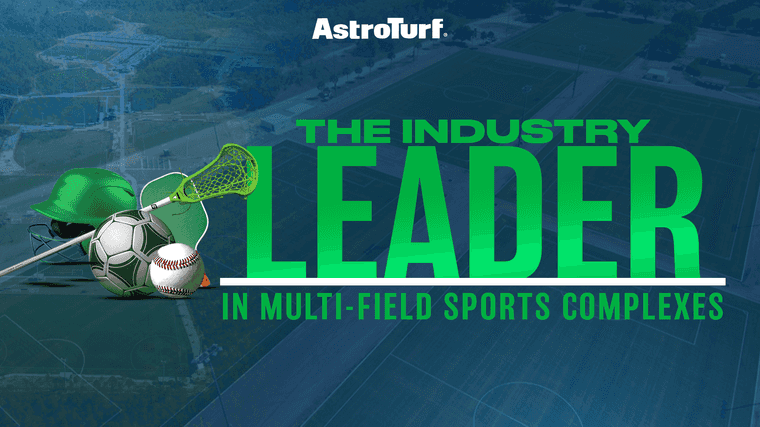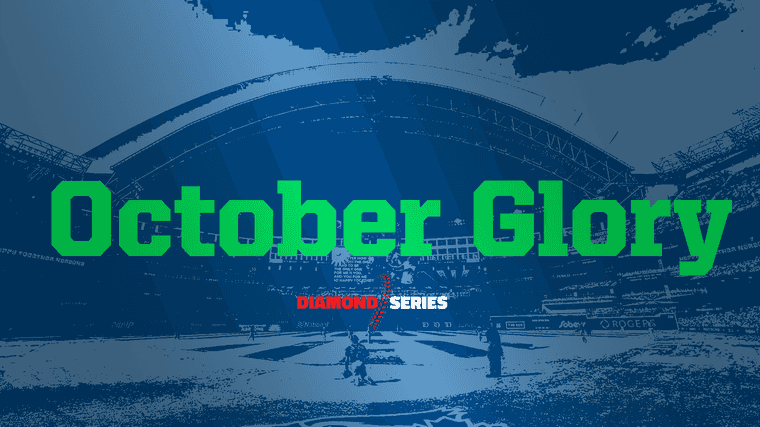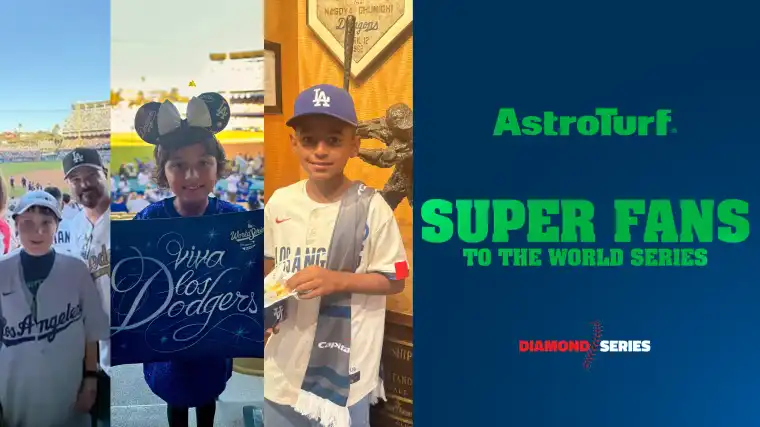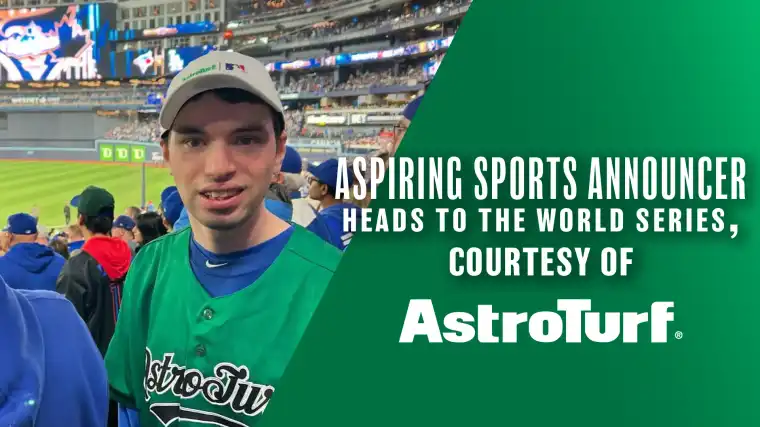When we installed the first synthetic playing surface in the Houston Astrodome in 1966, we created an entirely new category of athletic infrastructure. The original system solved an immediate problem—allowing baseball to be played indoors—but bore little resemblance to the sophisticated surfaces we manufacture today. So, how has AstroTurf changed since it was first invented?
Direct Answer: AstroTurf has transformed dramatically since 1966 through multiple technology generations. Modern systems incorporate advanced fiber technologies (Trionic Plus co-polymers), patented infill retention (RootZone), sustainable bio-based materials (80% sugar cane-derived polyethylene), comprehensive shock absorption systems, temperature management innovations, antimicrobial treatments, and PFAS-free manufacturing—creating surfaces that closely replicate natural grass rather than the carpet-like systems of the 1960s-1980s.
Understanding this evolution reveals how decades of research, athlete feedback, and technological innovation transformed synthetic turf from a controversial substitute into a legitimate alternative that, in some applications, surpasses natural grass performance.
First Generation (1966-1970s): The Original Revolution
The synthetic turf installed in the Houston Astrodome on April 18, 1965, consisted of short, tightly packed nylon fibers attached directly to a thin foam backing. The first Major League Baseball game on this surface occurred March 21, 1966, when the Houston Astros hosted the Los Angeles Dodgers.
Original System Characteristics
First-generation AstroTurf featured:
- Short nylon fibers: Approximately 0.5 inches in height, creating a dense, carpet-like surface
- Minimal cushioning: Thin foam padding providing limited shock absorption
- Direct installation: Surface laid over concrete or asphalt with minimal underlying support
- No infill materials: Fibers stood upright through density alone without granular support
- Single-layer construction: Simple backing system without sophisticated drainage or stability features
This system revolutionized indoor sports facilities and provided maintenance-free outdoor surfaces, but created playing characteristics dramatically different from natural grass. The hard, fast surface generated complaints about joint stress, unusual ball bounces, and increased injury risks that would damage artificial turf’s reputation for decades.
Performance Limitations
Athletes and coaches identified numerous problems with first-generation surfaces. The minimal cushioning created excessive impact forces during running and jumping. Surface temperatures in direct sunlight could exceed 160 degrees Fahrenheit, making fields dangerously hot during summer conditions. The dense, short fibers caused severe abrasions during sliding movements, leading to distinctive “turf burn” injuries.
By 1982, ten of twenty-six MLB teams played on artificial turf, but player complaints about these first-generation systems intensified. These legitimate concerns prompted us to invest heavily in research and development to address performance shortcomings.
Second Generation (1980s-1990s): Longer Fibers and Improved Cushioning
The 1980s brought significant improvements addressing first-generation limitations. Second-generation systems incorporated longer fibers, improved backing materials, and enhanced padding that provided more natural playing characteristics.
Key Improvements
- Longer fiber length: Increased to 1-2 inches, allowing more natural movement and flexibility
- Enhanced pad systems: Thicker elastomeric padding providing improved shock absorption
- Improved backing: Multi-layer backing materials offering better stability and drainage
- Varied fiber textures: Different fiber shapes and configurations create a more grass-like appearance
- Better installation methods: Improved seaming and anchoring techniques, reducing surface irregularities
These improvements reduced some athlete concerns, but second-generation systems still created playing characteristics noticeably different from natural grass. The surfaces remained controversial, particularly in football and baseball, where players continued expressing a preference for natural grass when available.
Third Generation (2000s): Infill Systems Transform Performance
The introduction of infill-based systems in the early 2000s represented a quantum leap in synthetic turf technology. Rather than relying solely on fiber density for support, third-generation systems used granular infill materials placed between longer fibers to provide cushioning, stability, and realistic playing characteristics.
Infill Innovation
Third-generation systems incorporated multiple infill layers:
- Silica sand base layer: Provided fiber stability and ballast
- Rubber granulate performance layer: Crumb rubber or alternative materials offering shock absorption and energy return
- Longer fibers: Extended to 2-3 inches, allowing natural grass-like blade movement
- Varied fiber types: Mixed fiber compositions create a more realistic appearance and feel
These systems transformed synthetic turf performance, creating surfaces that behaved much more like natural grass. The infill provided genuine cushioning that reduced impact forces, while longer fibers moved naturally during play.
However, third-generation systems revealed new challenges. Infill migration during intensive use created inconsistent playing conditions. Environmental concerns about crumb rubber materials prompted questions about synthetic turf sustainability. Surface temperatures, while improved, remained problematic in warm climates.
Fourth Generation (2010s-Present): Advanced Technology Integration
Modern synthetic turf represents the most sophisticated generation yet, incorporating proprietary technologies addressing every aspect of performance, safety, and sustainability.
RootZone Technology: Solving Infill Migration
Our RootZone system emerged from recognition that infill migration represented the primary performance challenge in third-generation systems. The technology employs crimped nylon fibers that create a three-dimensional matrix beneath the playing surface, mechanically encapsulating infill material.
Independent research from Michigan State University validated RootZone as producing the safest biomechanical characteristics among synthetic turf systems tested. The technology maintains consistent shock absorption and energy restitution across entire playing surfaces throughout product lifecycles, addressing the performance degradation that plagued earlier generations.
Trionic Plus Fiber Technology
Our Trionic Plus system integrates multiple advanced technologies into a single fiber platform:
Integrated innovations include:
- Co-polymer construction: Combines nylon strength with polyethylene softness
- Sharkskin technology: Reduces skin friction by 30% compared to standard fibers
- Statblock antistatic additive: Inhibits static electricity by up to 17 times
- DualChill thermal shield: Provides 42% improvement in infrared reflectivity, reducing surface temperatures
- Sanitized antimicrobial protection: Prevents bacterial buildup and eliminates odors
These fiber-level innovations address concerns that required separate system components in earlier generations, creating comprehensive performance improvements through advanced material science.
Sport-Specific Engineering
Modern systems feature customization for different sports applications rather than generic one-size-fits-all designs. Our Diamond Series for baseball uses zone-specific engineering with different fiber types and pile heights for base paths versus outfield areas. Since 2009, more Division I college baseball programs have chosen Diamond Series systems than any other artificial turf product.
Major League Baseball named us their Official Synthetic Turf partner, recognizing innovations in baseball-specific surface design that create playing characteristics closely matching natural clay and grass.
Sustainability Revolution: Bio-Based Materials and Carbon Neutrality
Perhaps the most dramatic recent evolution involves sustainable manufacturing and bio-based materials that address environmental concerns while maintaining elite performance standards.
Carbon-Neutral Systems
Our Poligras Paris GT Zero system, which featured at the Paris 2024 Olympics, incorporates 80% bio-based materials derived from sustainably farmed Brazilian sugar cane. This carbon-neutral hockey turf saves approximately 73 tonnes of CO2 per standard pitch compared to conventional synthetic turf.
The environmental impact has been independently certified by Berlin-based DAkkS-accredited consulting company GUTcert, validating genuine carbon neutrality rather than marketing claims. This represents a fundamental transformation from petroleum-dependent first-generation systems to renewable plant-based materials.
USDA BioPreferred Certification
We are the only USDA BioPreferred sports turf manufacturer, a federal designation requiring products to contain verified bio-based content meeting rigorous standards. This certification demonstrates leadership in sustainable manufacturing that extends beyond individual product lines to organizational commitment.
PFAS-Free Production
All AstroTurf products currently manufactured are PFAS-free, with raw materials and finished goods tested by third-party analytical chemistry laboratories for 32 PFAS compounds using state-of-the-art procedures. Results show PFAS concentrations below detectable limits, addressing concerns about “forever chemicals” in synthetic materials.
This chemical safety commitment represents a dramatic change from earlier generations, when manufacturing processes included various additives without comprehensive toxicological evaluation.
Testing and Validation Evolution
Modern product development follows evidence-based methodologies that didn’t exist during earlier generations.
University Research Partnerships
Our twelve-year partnership with the University of Tennessee’s Department of Turf Sciences represents hundreds of thousands of dollars in research investment, supporting comprehensive biomechanical studies, player movement analysis, and long-term performance monitoring that inform product development.
This academic collaboration produces peer-reviewed research validating innovations before market introduction, ensuring new technologies deliver measurable performance improvements rather than marketing differentiation alone.
Comprehensive Testing Protocols
Modern systems undergo rigorous evaluation, including:
- Berlin Athletes machine testing: Measures shock absorption, vertical deformation, and energy restitution
- One Turf testing: Aligned with FIFA, World Rugby, and FIH standards, considered the gold standard in synthetic turf evaluation
- Accelerated wear testing: Simulates years of intensive use within compressed timeframes
- Environmental stress testing: UV exposure, temperature cycling, and chemical resistance assessment
First-generation systems underwent minimal testing beyond basic safety thresholds, with performance characteristics discovered through field experience rather than laboratory validation.
Manufacturing and Installation Advances
Production and installation methods have evolved dramatically alongside product technologies.
Vertical Integration
We control all manufacturing aspects from initial masterbatch formulation through final field installation. This vertical integration ensures quality control at every stage and allows verification that only approved formulations and materials appear in finished products.
Climate-controlled prefabrication facilities allow precise assembly of field sections before transport to installation sites, minimizing variables during field construction and ensuring consistent quality regardless of geographic location or weather conditions.
Installation Precision
Modern installation techniques include laser-guided grading, precision seaming technologies, and sophisticated drainage integration that create seamless surfaces with consistent performance characteristics. First-generation installations involved relatively crude methods that often resulted in visible seams and performance variations across fields.
Performance Comparison: Then vs. Now
The differences between first-generation and modern systems become clear through direct comparison:
1966 Original System:
- Fiber height: 0.5 inches
- Shock absorption: Minimal (foam padding only)
- Surface temperature: 160°F+ in summer sun
- Infill: None
- Expected lifespan: 5-7 years
- Sustainability: 100% petroleum-based
- Testing: Basic safety only
- Biomechanics: Significantly different from natural grass
2025 Modern Systems:
- Fiber height: 2-3 inches (sport-specific)
- Shock absorption: Advanced (multi-layer pad + infill systems)
- Surface temperature: 42% cooler through DualChill technology
- Infill: RootZone-encapsulated multi-layer system
- Expected lifespan: 8-10 years
- Sustainability: Up to 80% bio-based, carbon-neutral options
- Testing: Comprehensive biomechanical validation
- Biomechanics: Closely replicates natural grass
Frequently Asked Questions
When did AstroTurf start using infill materials?
Infill-based systems emerged in the early 2000s as third-generation technology. Our first and second-generation systems (1966-1990s) relied on fiber density alone without granular infill materials. Modern systems use sophisticated multi-layer infill configurations encapsulated by RootZone technology.
Why did early AstroTurf have such a bad reputation for injuries?
First-generation systems (1966-1970s) provided minimal shock absorption, created excessive surface heat, and caused severe abrasions during sliding. These legitimate safety concerns damaged artificial turf’s reputation. Modern systems address these issues through advanced cushioning, temperature management, and friction-reducing fiber technologies.
How long does modern AstroTurf last compared to the original systems?
Original systems typically lasted 5-7 years before requiring replacement. Modern systems achieve 8-10 year lifecycles with proper maintenance, using superior fiber durability, UV stabilization, and construction quality that extends performance consistency throughout warranty periods.
Are modern AstroTurf surfaces still hotter than natural grass?
Modern systems incorporate DualChill thermal shield technology, providing 42% improvement in infrared reflectivity, significantly reducing heat absorption compared to earlier generations. While synthetic surfaces generally run warmer than natural grass, the temperature difference has narrowed substantially through material innovations.
What was the biggest technological breakthrough in AstroTurf history?
RootZone infill retention technology represents perhaps the most significant innovation, solving infill migration problems that plagued third-generation systems. The carbon-neutral Poligras Paris GT Zero system, using 80% bio-based materials, represents another transformative breakthrough addressing sustainability concerns.
Do professional athletes still prefer natural grass over modern AstroTurf?
Athlete preferences vary by sport and individual experience. AstroTurf surfaces appear in 75% of Olympic hockey competitions, with field hockey players universally preferring synthetic surfaces. Football and baseball show mixed preferences, though high-quality modern synthetic systems narrow preference gaps compared to poorly maintained natural grass.
The Next Generation: What’s Coming
Research continues into technologies that will define future generations:
- Fully biodegradable synthetic fibers: Maintaining performance while offering composting end-of-life solutions
- Smart surface technology: Embedded sensors providing real-time performance monitoring and maintenance optimization
- Advanced bio-based materials: Expanding plant-derived polymers beyond current sugar cane systems
- Enhanced recyclability: Design approaches enabling complete material recovery at end-of-life
These developments promise continued evolution addressing emerging priorities, including circular economy principles, climate adaptation, and data-driven performance optimization.
Six Decades of Continuous Innovation
The evolution from that first Houston Astrodome installation to today’s carbon-neutral, bio-based systems demonstrates how sustained research investment and commitment to improvement transform products over time. Modern AstroTurf shares only the basic concept with its 1966 predecessor—synthetic fibers replicating grass—while every aspect of materials, construction, performance, and sustainability represents fundamental advancement.
This transformation reflects more than incremental improvement. It representsa complete reimagining of what synthetic surfaces can achieve, from controversial substitutes tolerated for maintenance convenience to legitimate alternatives offering genuine performance advantages in specific applications.
The question “How has AstroTurf changed?” reveals a sixty-year journey from solving a single facility’s unique problem to creating sophisticated athletic infrastructure supporting elite competition worldwide. Each generation addressed the limitations of its predecessor while introducing innovations that expanded synthetic turf possibilities.
Our continued investment in research partnerships, sustainable materials, and performance validation ensures this evolution continues. The surfaces we manufacture today represent current technology, not final achievement. As athletic requirements evolve, environmental priorities intensify, and material sciences advance, we remain committed to developing next-generation systems that honor our legacy through ongoing innovation rather than resting on historical accomplishments.
